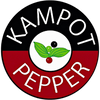The air is permeated with the scent of the sea, and underfoot, a layer of salt crust crunches. We are at the salt pans, where in the heat of the sun's rays, thousands of snow-white salt flowers bloom on the surface of small natural pools. These bloom only in a few places in the world, where they are traditionally harvested and exported all the way to your table, so that with a piece of the sea or ocean, they enrich the dish you are preparing.
How does true salt flower form?
By precipitating salt from seawater through the action of the sun's rays, which evaporate the water, small crystals form on its surface. For this purpose, small natural pools are built at the salt pans, where water is pumped from the nearby ocean or sea. The sun shines on these pools all day, and the wind plays with their surface.
The salt pans are interwoven with a system of dams and channels, through which the water level in the reservoirs is regulated, and by gravity, the water gradually reaches special salt basins, which are like a bed where the salt flower begins to bloom.
At the moment when sparkling salt flakes begin to appear on the surface of the reservoir, it is the right time to harvest them. This should be done by hand, using wooden rakes, with which the salt is gently collected from the surface of the basin. The harvested flower is not further processed, rinsed, or chemically bleached.
It is packed and shipped exactly as it grew
Unrefined. Untreated. And with its authentic appearance and color. Only in this way is the unmistakable taste of salt flower guaranteed, which is not just salty but contains a whole range of flavors, scents, and tastes of the sea. Here in the Czech Republic, we pack it into reusable zip bags or Czech glass jars, which are custom-made for us by a Czech glassworks.
Unfortunately, on the market, there are also salt flowers that lack all these benefits. These are artificially created salt flakes, crystallized by artificial drying, then rinsed, bleached, and presented as original, but they will disappoint you with their taste.
True salt flowers are rare
Look for those produced in the regions of Portugal's Algarve, France's Normandy, the Canary Islands, or Mallorca. Outside Europe, true salt flower is also obtained in some areas of Canada, Mexico, and Brazil, and of course, we must not forget the long tradition of salt flower harvesting in Cambodia's Kampot. You can buy our Kampot salt flower, which we purchase from a community of families who adhere to all ecological and ethical principles. Moreover, you know that you are not only seasoning tastefully but also well and responsibly.















